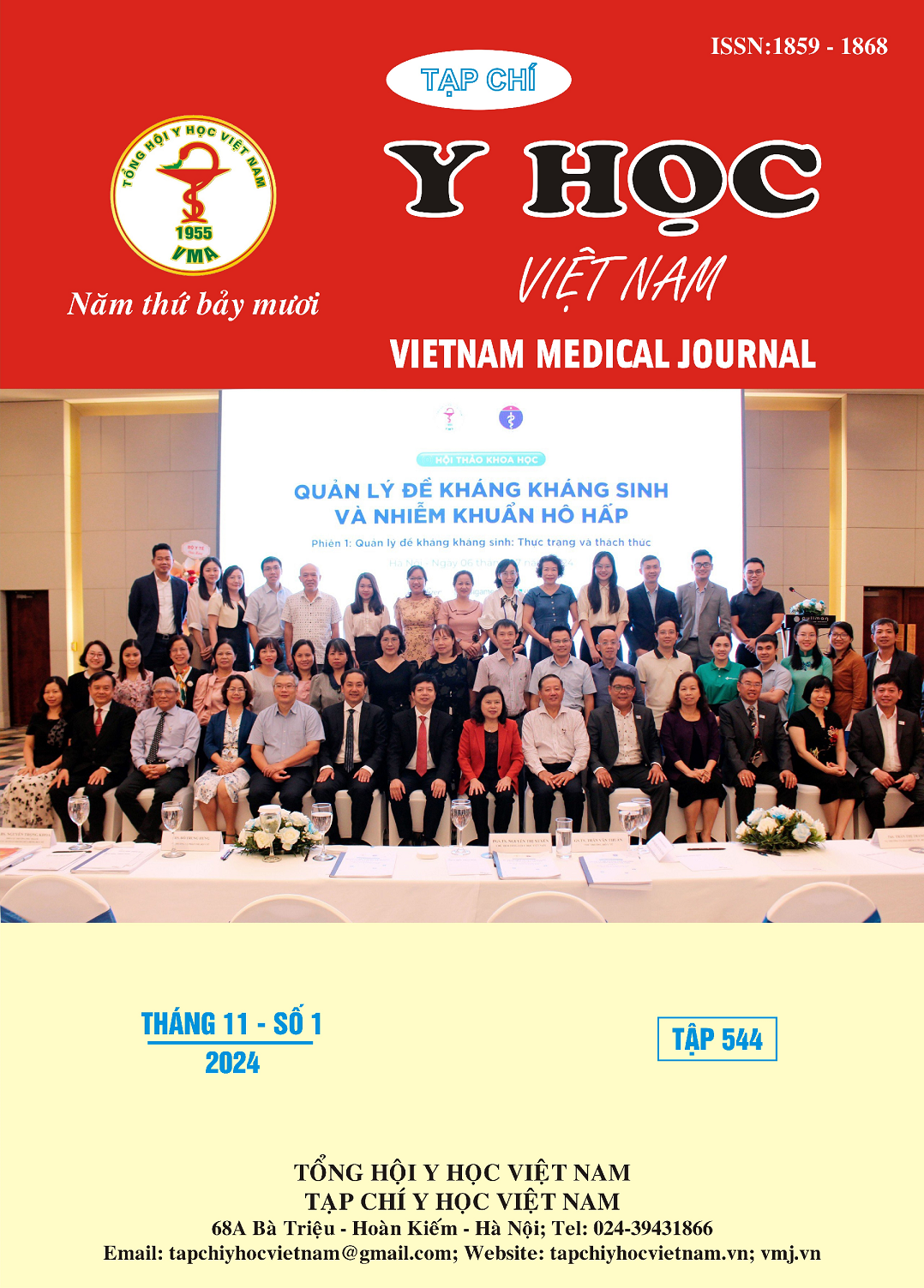RESULTS OF EMBRYO CREATION IN IVF CYCLES PERFORMING NON-INVASIVE PRE-IMPLANTATION GENETIC ANALYSIS
Main Article Content
Abstract
Objective: To evaluate the results of embryo formation in in vitro fertilization cycles using non-invasive preimplantation genetic testing for aneuploidy (NiPGT-A). Subjects and methods: A cross-sectional observational study of 44 couples who were indicated for preimplantation genetic testing for aneuploidy (PGT-A) and NiPGT-A who volunteered to participate in the study from 2020-2024 at Tam Anh General Hospital - Hanoi, and were cultured using a single-drop culture procedure. Results: The average age of the wife was 35 ± 4.68; infertility 2 accounted for 86.4%; PGT-A and NiPGT-A were indicated mainly due to advanced maternal age (43.2%) and chromosomal abnormalities of the wife or husband (20.5%); The average AMH was 2.99 ± 2.11 (ng/ml), FSH 6.83 ± 2.12 (mIU/ml), LH 5.25 ± 2.27 (mIU/ml), E2 34.73 ± 12.33(mIU/ml), P4: 0.23 ± 0.25(mIU/ml), Prolactin 53.36 ± 108.81; The average number of secondary follicles was 17.25 ± 11.59; The total FSH dose used in the controlled ovarian stimulation cycle was 2817.32 ± 366.46IU, the average FSH use time was 9.91 ± 0.77 days; The average number of aspirated follicle complexes was 11.73 ± 7.13 complexes; MII oocytes 8.73 ± 5.76; fertilization rate was 89 ± 14.5%; day 3 cleavage embryo rate was 90 ± 13%, blastocyst formation rate was 90 ± 14%; day 3 cleavage embryo transfer rate to blastocyst stage was 99.2% ± 5%. Conclusion: High fertilization results reached 89% ± 14.5% and blastocyst formation results were 90.1 ± 14.5% (total 344 blastocysts); day 3 cleavage embryo transfer rate to blastocyst stage was 99.2% ± 5%. Adjusting the single-drop embryo transfer process has increased the successful transfer rate of embryo transfer from day 3 cleavage embryo to blastocyst stage, ensuring non-invasive preimplantation genetic testing.
Article Details
Keywords
individual embryo culture, in vitro fertilization, niPGT, noninvasive pre-implantation genetic testing.
References
2. Huang L., Bogale B., Tang Y. et al. (2019). Noninvasive preimplantation genetic testing for aneuploidy in spent medium may be more reliable than trophectoderm biopsy. Proceedings of the National Academy of Sciences, 116(28), 14105–14112.
3. Farra, F. Choucair, and J. Awwad, “Non-invasive pre-implantation genetic testing of human embryos: an emerging concept,” Hum Reprod, vol. 33, no. 12, pp. 2162–2167, Dec. 2018, doi: 10.1093/humrep/dey314.
4. Hanson B.M., Tao X., Hong K.H. và cộng sự. (2021). Noninvasive preimplantation genetic testing for aneuploidy exhibits high rates of deoxyribonucleic acid amplification failure and poor correlation with results obtained using trophectoderm biopsy. Fertility and Sterility, 115(6), 1461–1470.
5. Yeung Q.S.Y., Zhang Y.X., Chung J.P.W., et al. (2019). A prospective study of non-invasive preimplantation genetic testing for aneuploidies (NiPGT-A) using next-generation sequencing (NGS) on spent culture media (SCM). J Assist Reprod Genet, 36(8), 1609–1621.
6. Rubio C., Navarro-Sánchez L., García-Pascual C.M., et al. (2020). Multicenter prospective study of concordance between embryonic cell-free DNA and trophectoderm biopsies from 1301 human blastocysts. Am J Obstet Gynecol.
7. Minasi M.G., Fabozzi G., Casciani V., et al. (2015). Improved blastocyst formation with reduced culture volume: comparison of three different culture conditions on 1128 sibling human zygotes. J Assist Reprod Genet, 32(2), 215–220.
8. Munné S., Wells D. (2017). Detection of mosaicism at blastocyst stage with the use of high-resolution next-generation sequencing. Fertil Steril, 107(5), 1085–1091.
9. Shilenkova Y.V., Pendina A.A., Mekina I.D. et al. (2020). Age and Serum AMH and FSH Levels as Predictors of the Number of Oocytes Retrieved from Chromosomal Translocation Carriers after Controlled Ovarian Hyperstimulation: Applicability and Limitations. Genes (Basel), 12(1), 18.
10. Ebner T., Shebl O., Moser M. et al. (2010). Group culture of human zygotes is superior to individual culture in terms of blastulation, implantation and life birth. Reprod Biomed Online, 21(6), 762–768.


